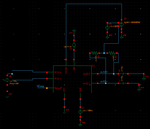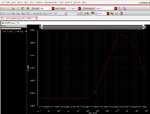Winny_Puuh
Junior Member level 1
Hi guys,
I am trying to simulate the CMRR of a fully differential telescopic amplifier. After having read quite a bit in the forum here I have come to a solution but I'm very unsure if I am really looking at the CMRR so I wanted someone who knows more than me to confirm it (see screenshots).
And actually I wanted to see the CMRR in a Monte Carlo Simulation but do I have to look at the DC value then or at a special frequency? My first results make me think I did sth. wrong cause the CMRR goes from -2,88dB to -75 dB... that can't be right...
Thanks for any help,
Winny


I am trying to simulate the CMRR of a fully differential telescopic amplifier. After having read quite a bit in the forum here I have come to a solution but I'm very unsure if I am really looking at the CMRR so I wanted someone who knows more than me to confirm it (see screenshots).
And actually I wanted to see the CMRR in a Monte Carlo Simulation but do I have to look at the DC value then or at a special frequency? My first results make me think I did sth. wrong cause the CMRR goes from -2,88dB to -75 dB... that can't be right...
Thanks for any help,
Winny

